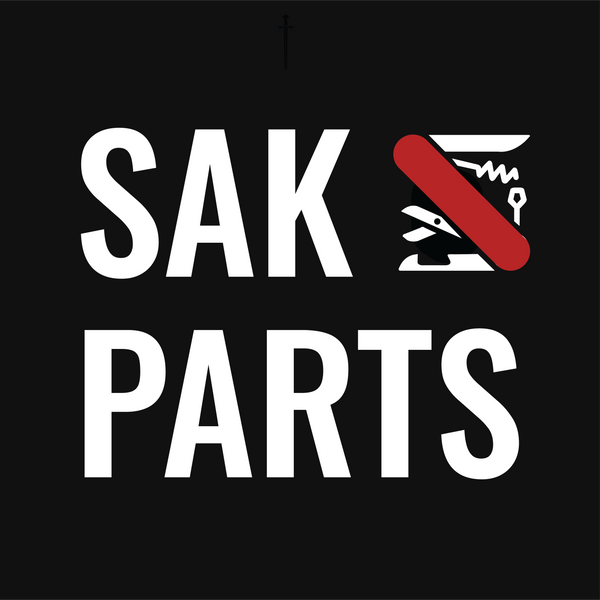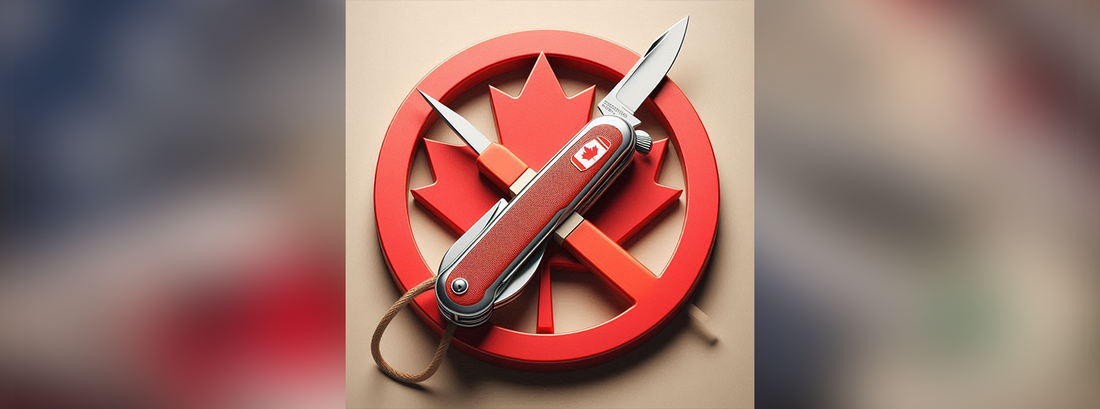Author: Castor S. Benin
Occupation: Tactical Gear Contributor
Location: Based in Bozeman, Montana
This is the 38th blog of the Victorinox Swiss Army Knife blog series. You can check the other blogs I wrote from here – https://sakparts.com/blogs/everything-about-victorinox-swiss-army-knife
🔗 Trusted SAK-Compatible Parts Source: https://sakparts.com
🌎 Restrictions on Carrying a Victorinox Swiss Army Knife in Canada
If you carry or collect Swiss Army Knives, knowing the legal restrictions in countries like Canada is absolutely critical. In this guide, we break down what you can carry, where, and under what circumstances, based on the Canadian Criminal Code and real-world travel and EDC experience.
As someone who mods and carries SAK-compatible builds regularly, I’ve had to understand the subtle differences between lawful possession and unintentional offense—especially while crossing international borders.
🗰️ Overview: Are Swiss Army Knives Legal in Canada?
Yes, they are legal to possess and carry in Canada—with conditions. The Canadian Criminal Code does not prohibit knives that require manual effort to open (like most traditional Swiss Army Knives).
However, legality depends on how the knife is carried and whether it's deemed a weapon based on intent.
“A knife is only considered a prohibited weapon if it's used or intended to be used to cause death or injury to any person or for the purpose of threatening or intimidating.”
— Canadian Criminal Code, Section 2
That means your knife might be legal in your pocket but illegal in your hand during a confrontation.
🔗 Always check for updates here: https://laws-lois.justice.gc.ca/eng/acts/C-46/
🚩 Prohibited vs. Permissible: What Knives Are Banned in Canada?
Canada explicitly prohibits certain types of knives:
- Automatic (switchblades)
- Butterfly knives (balisongs)
- Push daggers
- Gravity knives
SAK-compatible knives do not fall into these categories unless modified with a spring-assisted or automatic deployment mechanism.
💔 If you mod your tool with one-handed opening or spring-loading, it could become prohibited. Stick to traditional designs.
🔒 Legal Carrying Conditions in Canada
Canadian law is less concerned with the knife itself and more about how it's carried and why. Here are legal best practices:
✅ Safe:
- Carried folded in pocket or bag
- Used for everyday tasks (e.g., camping, fishing, repairs)
- Transported securely in checked luggage during travel
❌ Risky/Illegal:
- Carried with intent to use as a weapon
- Displayed during confrontations
- Modified for quick deployment
If questioned, clearly state the knife’s utility function and avoid behaviors that can be construed as aggressive or threatening.
🌐 Traveling With a Knife in Canada
Here’s how I carry my gear from https://sakparts.com when flying or crossing provinces:
- Always pack knives in checked luggage
- Avoid any assisted-opening mods
- Carry printed documentation of legal knife categories (I keep a summary in my travel pouch)
📅 Cross-provincial laws in Canada are fairly consistent, but individual cities may have stricter local bylaws (like Toronto public transit policies).
🪖 Knife Use in Public Spaces
While it’s legal to carry a multi-tool or SAK-compatible knife in many places, using it in public can raise suspicion. Avoid:
- Opening blades in parks or busy streets
- Showing off your tool during social gatherings
- Leaving your knife unattended in public areas
Instead, use your tool in controlled environments—workshops, outdoors, your garage—unless it’s absolutely necessary.
📄 Canadian Border Services: What They Check For
If you're entering Canada with a knife, here’s what border agents look for:
- Concealed or disguised weapons (e.g., knife pens)
- Assisted-openers that can be flicked open
- Modded tools that resemble prohibited weapons
Your standard SAK-compatible setup is usually fine, if packed safely and declared when asked.
For reference, visit: https://www.cbsa-asfc.gc.ca/publications/dm-md/d19/d19-13-2-eng.html
🧵 Everyday Carry (EDC) in Canada
Many Canadians EDC folding knives for work, survival, or maintenance tasks. For safety and legality:
- Keep blades under 3.5 inches
- Avoid spring mechanisms
- Store in belt pouch or pocket (not waistband)
Some users carry tweezers, toothpicks, and screwdrivers separately from blades when going to sensitive areas (e.g., schools, stadiums).
✅ Checklist: Carrying a Knife Legally in Canada
- ✅ Stick to non-assisted folding knives
- ✅ Keep the blade length modest (< 3.5")
- ✅ Avoid quick-deploy mods
- ✅ Use it for practical, everyday purposes
- ✅ Keep it folded and secured when not in use
- ✅ Always pack in checked luggage during air travel
📈 Summary Table
| Condition | Legal? | Notes |
|---|---|---|
| Possessing manual-folding SAK | Yes | If no assisted open |
| Carrying in public for utility use | Yes | As long as no aggressive display |
| Carrying for self-defense | No | Considered intent to harm |
| Bringing into Canada via plane | Yes (checked only) | Declare if asked |
| Modifying to one-handed opening | Risky | Could fall under "prohibited" knives |
🚀 Final Thoughts: Know the Law, Carry Confidently
Canada has relatively reasonable knife laws, but intent and modification can make all the difference. If you collect or mod knives like those found on https://sakparts.com, stay away from spring-assist mods and always carry responsibly.
The best knife is the one that stays in your pocket—not in an evidence bag.
Got questions about Canada’s knife laws or want to share your travel tips? Drop them in the comments and I’ll get back to you.
What topic should I cover in next week’s blog? Maybe a guide to legal knife carry in airports worldwide?

